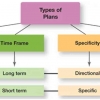Health services, especially remote nursing using information technology media, provide convenience for rural communities and as a solution in breaking the spread of the Covid-19 virus because people or patients do not need to come to the hospital to get health services and do not meet face to face. The time required for health services is also flexible. Patients at home can make contact via the internet or video telephone to get health information, care and even treatment.
A nurse who performs telenursing continues to use the nursing process to review, plan, implement, evaluate and document nursing care, especially in providing palliative care. Telenursing also involves the process of providing health education to clients, as well as the existence of a referral system. In addition, telenursing also requires a therapeutic relationship between nurses and clients through the use of telephone, internet or other communication tools. However, when communicating via telenursing, nurses must be able to reduce the delivery of unnecessary information and protect the privacy and security of information relating to clients.
The weakness of telenursing is that clients who receive services can only be saved with evidence-based information and care, so nurses must continuously update their knowledge. They must have the skills to provide competent nursing services through technology. In addition, difficulties in using technology are due to lack of guidance, lack of education, and lack of help and support for nurses and patients. We could face technological failures, threats to patient safety and malpractice.
Ensuring confidentiality and informed consent is also a problem in telenursing. The main challenges faced in telenursing are the occurrence of inadequate communication about the patient's clinical condition causing clinical errors, limitations of computer support systems regarding communication, lack of visual references when communicating between nurses and patients, especially communication without video, difficulties in understanding nonverbal communication, especially when done by telephone.
However, telenursing is effective in reducing the spread of the Covid-19 virus in improving the quality of life of patients with chronic diseases. Provided that the nurse who performs telenursing must be a nurse who has a valid and current license. In addition, a nurse must have a positive attitude, open mind, knowledge and technology skills. The nurse must be able to assess the client's hospitalization needs and be able to change the plan of care (Hederbergh, 2007; Sharma, 2014).
A client-centred communication is the preferred approach technique in order to build a relationship between the client and the professional. Good communication will have an impact on feelings so that every word will be easy to hear and understand. Thus the client and his family will be motivated to follow the nurse's advice. The purpose of telenursing is not to form a medical diagnosis but rather to focus on information, support, and increasing family knowledge, especially for patients who have chronic diseases and must receive palliative care but are hindered by the Covid-19 pandemic.
Families of chronic disease sufferers are expected to carry out family duties in health to achieve independence in palliative care at home. Through telenursing, nurses are able to monitor, provide health education, follow-up, assessment and data collection, intervene, educating, provide support to families as well as innovative and collaborative care (Turolla et al., 2020; Vidal-Alaball et al., 2020).
Telenursing can be applied and proven effective (research in America in 2013) to assess the palliative needs of patients. The related needs are education, psychosocial support, clinical assessment, communication, and information including for families who wish to care for patients with compassion during the palliative phase. While the expected evaluation or outcome is a decreased level of anxiety, better quality of life, acceptance, satisfaction, and cost effectiveness.
Based on research conducted by fahrepi et al (2019), the identity of the quality of telenursing services consists of aspects of physical evidence (tangibility), reliability, responsiveness, assurance and caring (empathy). Families who wish to care for patients with chronic diseases lovingly during the palliative phase, the application of telenursing can be used as an alternative for communicating and changing information with health worker.
Implementation of telenursing in Indonesia optimally, of course, there are several things that must be prepared, including health human resources who understand technology, adequate information technology facilities and infrastructure, the availability of guidelines and practice standards, a code of ethics and a body that will regulate telenursing practices with other health professionals as part of a telehealth practice.










